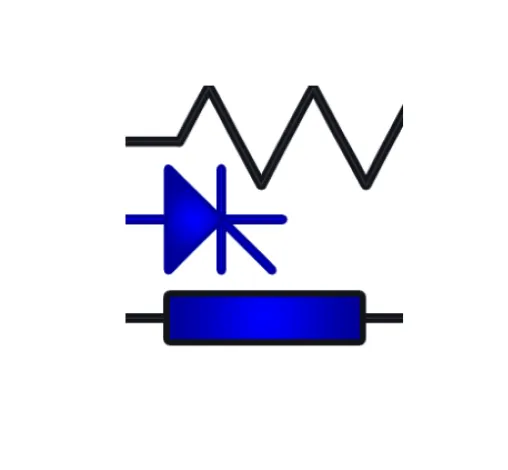15 Results for the search "Lines":
VOLTAGE TRANSIENTS IN A DISTRIBUTION NETWORK CORRELATED WITH EVENTS IDENTIFIED BY A LIGHTNING LOCATION SYSTEM
Description:
Monitoring units for the measurement of high frequency voltage transients have been in operation at three different busses of an Italian medium voltage (MV) distribution feeder, mainly composed by ove... see morerhead lines, in March 2007 – August 2008. The feeder is located in a region characterized by a high ground flash density value (4 flashes/km2/yr); many of the recorded voltage transients may be correlated with the lightning events detected for the same region by the Lightning Location System (LLS) CESISIRF. The paper presents some experimental results obtained using the monitoring units and their comparison with computer results obtained using a LIOV-EMTP model of the considered MV feeder. A procedure aimed at achieving the best fit between measurements and calculations, which takes into account the uncertainties associated with LLS data, is also presented.
Authors:A. Borghetti, F. Napolitano, C.A. Nucci, M. Paolone, M. Bernardi, W. Schulz
X International Symposium on Lightning Protection, 9th-13th November, 2009 – Curitiba, Brazil
Tag(s): Lightning, distribution network, LIOV, EMTP
Interaction Between Grounding Systems and Nearby Lightning for the Calculation of Overvoltages in Overhead Distribution Lines
Description:
The aim of the paper is to analyze overvoltages in overhead distribution lines induced by nearby lightning return stroke currents taking into account also the conductive coupling between the lightning... see more current injected into the soil and the line’s grounding system. Experimental results obtained in 2003 at the International Center for Lightning Research and Testing (ICLRT) in Florida have shown that significant currents were coupled with an overhead experimental line through its grounding system by nearby rocket-triggered lightning.
The paper first proposes a conductive coupling model between the lightning current injected into the soil and the nearby line grounding system, then presents the incorporation of such a model into the LIOV-EMTP computer code. The paper finally presents an experimental validation of the proposed models by making reference to results obtained during the above-mentioned triggered-lightning campaign.
Authors: F. Napolitano, M. Paolone, A. Borghetti, C.A. Nucci, F. Rachidi, V.A. Rakov, J. Schoene and M. A. Uman
Tag(s): lightning induced overvoltages, grounding systems, overhead distribution lines, lightning protection.
Assessment of the Lightning Performance of Compact Overhead Distribution Lines
Description:
The assessment of the lightning performance of a compact configuration of MV overhead lines that is expected to be adopted in the near future by an electricity distribution company in a Brazilian regi... see moreon characterized by high keraunic levels is presented. The compact configuration is characterized by the presence of an unenergized wire that has the main function to sustain the spacers of the phase conductors. As the wire could be periodically grounded, the paper analyses its effectiveness in reducing the overvoltages due to indirect lightning. The results are compared with those relevant to a conventional configuration of MV overhead lines now adopted by the same distribution company. The effects of the presence of surge arresters along the line are also analysed.
Authors: F. Napolitano, A. Borghetti, D. Messori, C.A. Nucci, M.L.B. Martinez, G.P. Lopes, J.I.L. Uchoa
CIGRE SC C4 2012 Hakodate Colloquium
Tag(s): Lightning protection, Overhead distribution lines, Induced overvoltages, Electromagnetic transients.
Line_Coupling
Description:
The following example demonstrates the coupling effect between 3 adjacent transmission lines.
The case study consists of the implementation of a third transmission line next to two existing... see more lines. The data of the geometrical configuration are entered in the DATA LINE module and are stored in the "line_couplin_CP.lin". The generated model was obtained using the CP option and are loaded to the CP m-phase module using the data included in the "line_coupling_CP_rv.csv" file. The results are very close to the measurements provided in "H.W. DOMMEL ET AL, CASE STUDIES FOR ELECTROMAGNETIC TRANSIENTS, P.1,1991".
Presentation of an approach based on EMTP for the calculation of lightning induced overvoltages
Description:
Authors:
A. Xémard, P. Baraton, B. Bressac, N. Qako, J. Mahseredjian, G. Simard, J. Ribeiro, R. Tarafi, A. Zeddam.
Abstract:
LIPS (Lightning Impact on Power Systems) is a toolbo... see morex based on EMTP (DCG version) and devoted to the calculation of the failure rate of apparatus due to lightning. This software covers direct and induced lightning. It has been developed in a partnership project between France Telecom, Hydro-Québec and électricité de France. The induced lightning nearby the electrical system. It is based on the following computational steps:
1) For each overhead line and underground cable of the electrical system, two equivalent current sources are calculated in the frequency domain, representing the illumination of the conductors by external electrical field due to lightning. These sources are evaluated in the frequency domain, taking into account the variation of the parameters of lines and cables with frequency. The conductivity of the ground is taken as finite. The modal theory is applied in the case of multi-conductor cable or line.
2) The equivalent sources are converted into time-domain and then included in an EMTP representation of the system allowing a time-domain transient computation. this approach and follow by comparisons between induced overvoltages calculated by LIPS and results from the literature.
